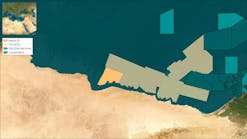John Waggoner
Technology Editor, Drilling & Production
New legislation proposed in Brazil would designate all pre-salt areas the domain of Petrobras and shift to the adoption of production sharing agreements between the national oil company and its partners instead of concession auctions.
The idea is to harness the bonanza of Brazil’s subsalt hydrocarbons for social and economic development projects while not infringing upon the rights of other operators already active offshore.
One of the most striking changes is that state-owned Petrobras would become the official operator of all new subsalt oil and gas concessions and other areas considered “strategic” by future determination of the government.
The plan allows Petrobras to form partnerships with other operators, but the federal government retains the right to grant concessions exclusively to Petrobras, or to hold bidding rounds modeled loosely previous licensing auctions.
Petrobras would remain the operator for all these concessions and would be guaranteed a minimum of 30% capital stake in each venture. It would also acquire the right to bid competitively for a higher percentage in these deals.
While the changes are profound, the rules proposed for the new production sharing model retains many of the aspects of earlier concessions.
While the private sector can no longer become sole operator, Petrobras is already a partner in many of the existing concessions.
Even in the most neo-liberal moments of Brazil’s political past, Petrobras has been a virtually obligatory fixture for every major oil and gas infrastructure project in the country for more than 50 years. Brazil’s largest company is publicly traded, but the federal government retains a golden share, and has since the beginning.
The new rules do represent some of the most important changes in the Brazil’s regulatory structure since the groundbreaking reforms of 1997, when for the first time Petrobras was forced to allow competition upstream.
These include production sharing contracts for pre-salt concessions and the creation of a new state company to manage these assets.
To codify this into law, two new concepts have been introduced:
- “Profit oil,” which refers to production from a certain field, after deduction of costs and expenses related to oil production
- “Cost oil,” which corresponds to the amount spent by the contractor for exploration and production activities.
For concessions that are offered to the private sector, the winning bidder will be determined by competing pledges of “profit oil,” with the government’s share of production expressed as a percentage.
Petrobras will then have to match this percentage, in proportion to its stake in the project. In areas in which Petrobras remains the sole operator, a government council called CNPE will determine the percentage of “profit oil” to be paid.
To pay for the transfer of rights in the pre-salt areas, Petrobras will pay the federal government funds to be raised by floating new shares.
Another important nuance is that the payment of subscription bonus (which is not a criterion for the bid) will be defined on a case-by-case basis by CNPE.
In previous concession rounds, the auction rules were generally geared toward the amount to be invested in the country rather than cash payments, although in some cases significant subscription bonuses were paid. States where oil was found were happy to get value added tax contributions off sales of local content.
Now with the amount of oil wealth being set aside, states far removed from offshore oil and gas activities have begun to make noise.
Lawmakers claim the royalty payments structure will continue to follow the general terms of Law No. 9,478, the same law that broke the Petrobras monopoly in 1997 and set the stage for existing oil and gas concessions.
However, given the considerable political effort by states currently not receiving royalties to get a piece of the action for their own jurisdictions, some jockeying for funds is likely to happen before the full legislation is approved.
The state-run company to manage these founds would not conduct upstream activities or make investments, but it would participate in operational committees, with voting rights and veto powers to be defined.
Other crucial details:
- The authorization to the Brazilian government to transfer to Petrobras the oil and gas exploration and production activities in areas of the subsalt layer that are not subject to concessions, limited to the maximum volume of 5 Bboe
- Petrobras and the Brazilian government would sign a contract to determine these geographical areas, the amount to be paid for this “transfer of rights,” the conditions for the reappraisal of the transfer value and the payment conditions for Petrobras
- Exploration and production activities in these areas will be regulated and supervised by the National Petroleum Agency (ANP). The ANP will also approve agreements concerning the unitization of production that may be required in this area.
A boon to local industry
Petrobras says it will need at least 28 drilling facilities for delivery from 2011-2013.
The first seven of those contracts have been set aside for a single shipyard, making it possible for the winner to invest heavily enough to bring Brazil’s modest shipbuilding capabilities in line with Singapore.
At the same time, Petrobras has partnered with the Federal University of Rio de Janeiro (UFRJ) and Schlumberger to open a $10-million research center. The state of the art facility will be build alongside the COPPE “Ocean Lab,” and be dedicated to the development of local technologies for offshore.
This new facility will focus on developing geosciences software, new technologies for producing and characterizing reservoirs in the subsalt, and building a 4D geophysical processing and interpretation center.
Research projects are planned in electromagnetic characterization, seismic data analysis, nuclear magnetic resonance technology, and H2S electrochemical sensors, with six more projects currently being evaluated.
The center will allow Petrobras to develop experimental infrastructure with the advantage of the local suppliers being on board early on in the research, and better able to supply the technology once it is qualified.




